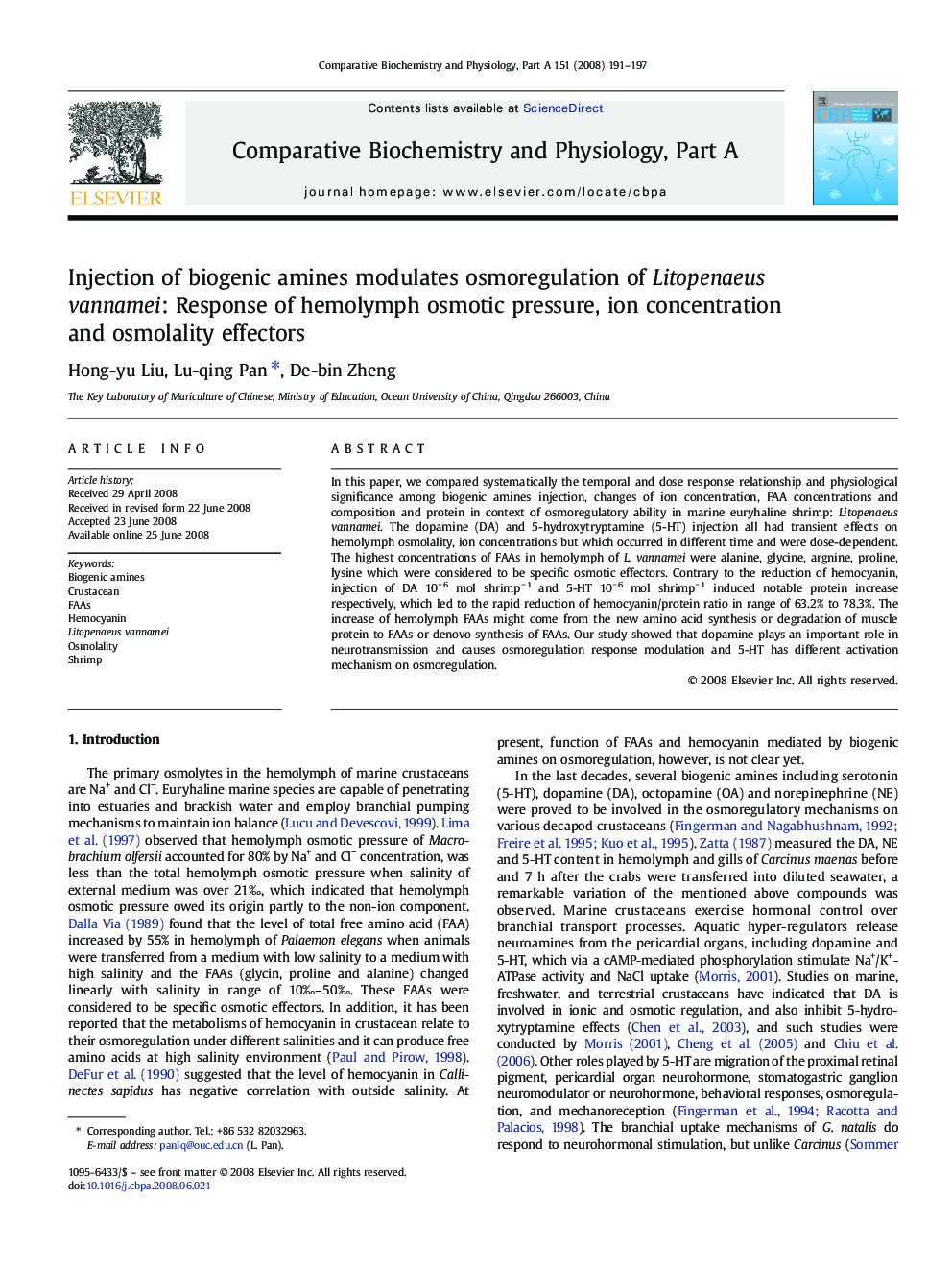| Article ID | Journal | Published Year | Pages | File Type |
|---|---|---|---|---|
| 1973823 | Comparative Biochemistry and Physiology Part A: Molecular & Integrative Physiology | 2008 | 7 Pages |
In this paper, we compared systematically the temporal and dose response relationship and physiological significance among biogenic amines injection, changes of ion concentration, FAA concentrations and composition and protein in context of osmoregulatory ability in marine euryhaline shrimp: Litopenaeus vannamei. The dopamine (DA) and 5-hydroxytryptamine (5-HT) injection all had transient effects on hemolymph osmolality, ion concentrations but which occurred in different time and were dose-dependent. The highest concentrations of FAAs in hemolymph of L. vannamei were alanine, glycine, argnine, proline, lysine which were considered to be specific osmotic effectors. Contrary to the reduction of hemocyanin, injection of DA 10− 6 mol shrimp− 1 and 5-HT 10− 6 mol shrimp− 1 induced notable protein increase respectively, which led to the rapid reduction of hemocyanin/protein ratio in range of 63.2% to 78.3%. The increase of hemolymph FAAs might come from the new amino acid synthesis or degradation of muscle protein to FAAs or denovo synthesis of FAAs. Our study showed that dopamine plays an important role in neurotransmission and causes osmoregulation response modulation and 5-HT has different activation mechanism on osmoregulation.
